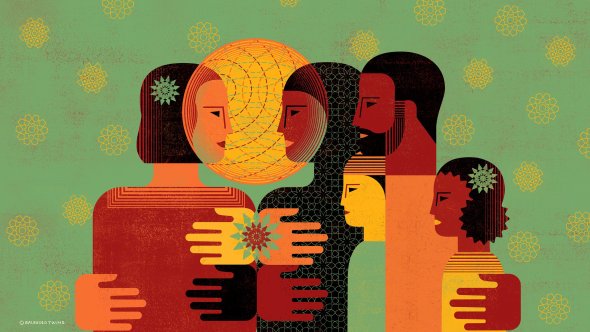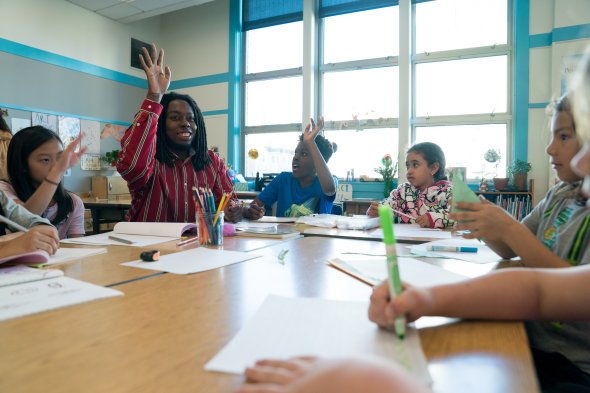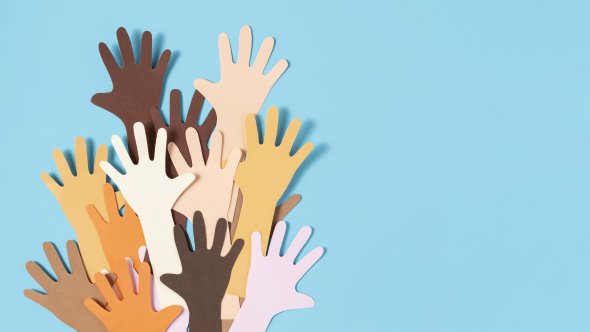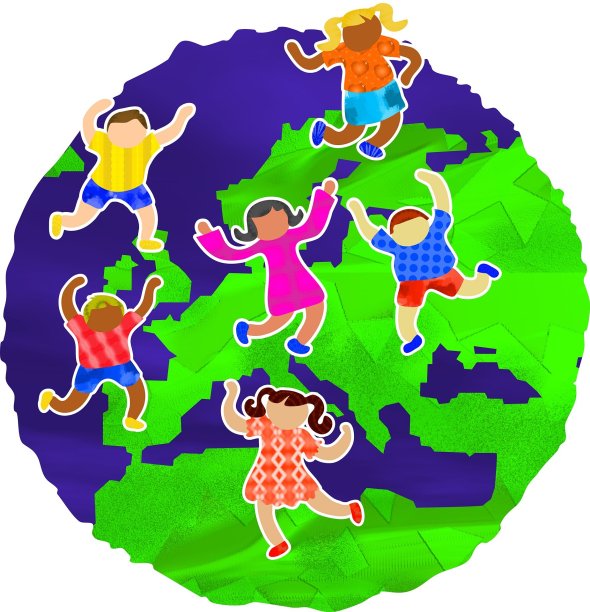
Overview
1st-grade students in SFUSD engage in an average of 45 minutes (through both integrated and stand-alone units) of social studies instruction from 4-5 days a week. There will be 3-5 week stand-alone units that alternate with Science units during the year. These units prioritize building the understanding that every community member (citizen) has rights and responsibilities in the ways our communities function.
Provide opportunities for students to deepen their self-identity through the exploration of the different cultures and solidarity in their greater community. Explore the ways that communities change over time by taking a closer look at local neighborhoods. Analyze the development of community agreements/rules and laws in the larger community as well as the physical environment in which people live/work.
Begin to understand how to find different resources in their communities, such as goods, services, and community centers through the use of maps. Develop an understanding of the interconnection between themselves, their neighborhoods, and the world at large. Determine ways students can work together to build a better community rooted in the SFUSD Humanizing Values (knowledge of self, solidarity, and self-determination) and core concepts of Ethnic Studies.
Priority Standards Link to this section
What students will know, what students will do, and what thinking skills students will develop to apply and transfer History/Social Studies/Ethnic Studies understandings that endure within the discipline, leverage deeper understandings, and/or support readiness for success at the next grade level.
In first grade, students focus on these critical areas:

Rights and Responsibilities of Community Members
Students identify differences between rights and responsibilities. They identify their rights and responsibilities as community members and how their actions can affect the community at large. They identify connections between classroom agreements they help develop and the ways community rules/ laws are developed including identifying what happens when agreements are not followed. They explore concepts of equity and fairness and how each individual is responsible for taking action to ensure the fair and just treatment of all members of the community.

Different Cultures, One Community and Changing Times
Students explore and identify their own cultural backgrounds as well as their classmates'. They investigate the ways different cultures come together in a community. Students research how schools have changed as people from different cultures have come together in classrooms. They explore the different benefits and challenges of diverse communities.

Making and Using Maps
This unit's main focus is making and using maps. Students explore their place on maps and their place relative to their expanding ideas of community. Students research the difference between goods and services and where those resources can be found in their neighborhood communities. Students learn how the use of map keys, compass roses, and directionality affect the making and usage of maps in their daily life
Instruction: Signature Elements Link to this section
Below are signature elements of SFUSD History/Social Studies instruction that students should experience regularly throughout first grade as they develop as historians & social scientists.
Community Responsive Teaching
Adapt lessons, units, etc to reflect and honor the experiences and community of your students. Making humanizing connections to personal/community/cultural experiences
Inquiry
Students engage in authentic cycles of inquiry: developing questions & planning inquiry, applying disciplinary tools & concepts, evaluating sources & using evidence, and communicating conclusions & taking informed action.
Historically Responsive Literacy
Create lessons that use various resources (visual, oral, and written) that represent a wide range of diverse people that contribute to our communities
Taking Informed Action
Students take action in their community based on the information they have gathered throughout their inquiry. (Check out the next two and a half minutes of the video for an explanation.)
Materials
Beyond the First Grade Units Overview, there are no required materials.
Units
Units for First-Grade History/Social Studies/Equity Studies are currently in development. See below for guidance and examples of how you might structure your own units. (Click here for the same information below in an easy-to-read format: Overview and Examples for 1st Grade Units)
Unit Design
Incorporation of the Four Dimensions of the Inquiry Arc Across the Three Bends of a Unit
| Developing Questions and Planning Inquiries | Applying Disciplinary Tools and Concepts | Evaluating Sources and Using Evidence | Communicating Conclusions and Taking Informed Action |
|---|---|---|---|
| A compelling question supported by Investigation questions | Investigate the ideas, tools, and concepts of
|
Gather evidence from reliable sources | Do something with the knowledge and skills acquired |
| Inquiry | Investigation | Informed Action | |
DRAFT Units
Here are some DRAFT practical examples. Each class may go on a slightly different path (culturally/community-relevant), but are still likely headed in the same general content-driven direction. Students engage with a compelling question. Students learn more through exploring media (books, videos, etc), interviews, field trips, etc..(historically responsive literacy). Students generate new questions based on what they learned, explore more (inquiry), and eventually and/or during the process create artifacts that represent their learning and/or contribute to their community in some fashion (informed action).
| Rights and Responsibilities of Community Members (example) | Inquiry | Possible Investigations | Possible Informed Actions |
|
|
Do This First: Launching Unit for first 2 weeks Compelling Question: How can we come together as unique (diverse) people to build a better community? This should lead to investigative questions from the students. Here is a possible way to elicit those questions: |
|
|
|---|---|---|---|
| Different Cultures, One Community and Changing Times | Inquiry | Possible Investigations | Possible Informed Actions |
|
Compelling Question: How do people from different (diverse) cultural backgrounds build communities that change over time? This should lead to investigative questions from the students. Here is a possible way to elicit those questions: |
|
|
|
| Making and Using Maps | Inquiry | Possible Investigations | Possible Informed Actions |
|
Compelling Question: How can we help others locate important places in our community, where to get what we need and find out what makes it special? This should lead to investigative questions from the students. Here is a possible way to elicit those questions: |
|
|
Planning Guide
Many elements of first-grade History/Social Studies can and should be integrated across the day and year. That being said, three periods of roughly five weeks are set aside each trimester for more intensive History/Social Studies learning. Through these units, First-grade students will learn ...
| 1st Trimester | 2nd Trimester | 3rd Trimester |
|---|---|---|
| Rights and Responsibilities of Community Members | Making and Using Maps | Different Cultures, One Community and Changing Times |
| ~5 weeks of 4 lessons per week | ~5 weeks of 4 lessons per week | ~5 weeks of 4 lessons per week |
Reflection Questions Link to this section
- How are students' developmental needs, communities, and experiences being reflected and honored, or how could they be?
- What opportunities do you see for developing equitable access & demand, inquiry, collaboration, and assessment for learning?
- What are the implications for your own practice? What strengths can you build upon? What will you do first?
Want More?
This page was last updated on August 21, 2023

